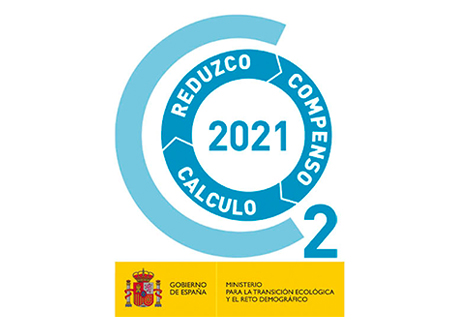Sacyr received the triple seal “Calculo-Reduzco-Compenso” for the second consecutive year for calculating and registering its carbon footprint for a minimum of four years, for having a plan in place to cut down its emissions, effectuating its carbon emission commitments and for participating in a CO2 absorption project.
The Spanish Office for Climate Change, which depends on the Ministry for the Ecological Transition and the Demographic Challenge, manages the carbon footprint registry, to which companies can voluntarily adhere to.
Sacyr has reduced the average carbon by 2.21% in the 2019-2021 period, compared to the 2018-2020 period, for Scopes 1, 2 and 3. This way, the company fulfills its firm commitment to reducing its carbon footprint, included in the 2021-2025 Sacyr Sustainable Action Plan, which encompasses the company’s goals within the framework of the fight against climate change and environmental and social protection where it carries out its activities.
In addition, the company has partly compensated its carbon footprint in 2021 via a CO2 absorption project, in Burgos (Spain), which seeks to revive a deforested area with high desertification risk, by eliminating erosion risks, increasing biodiversity and improving the structure and organic matter in the soil.
This project includes a 23-hectare surface to plant autochthonous and resilient species, that will absorb more than 6,000 tons of CO2.
The scope of this award encompasses all the activities in Spain of Sacyr and its subsidiary companies. With this boost, Sacyr continues to work towards achieving its most ambitious commitment in climate terms: being carbon neutral before 2050.
This recognition strengthens Sacyr’s commitment to Sustainable Development Goal (DG) 13 “Climate Action”, and thus, to fulfilling the 2030 Agenda, for its incorporating of climate change fighting measures into management and promoting the national plans implemented to this same end.
This project includes a 23-hectare surface to plant autochthonous and resilient species, that will absorb more than 6,000 tons of CO2.
